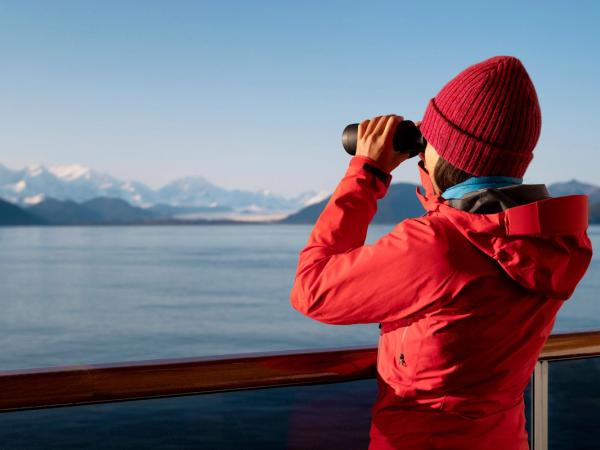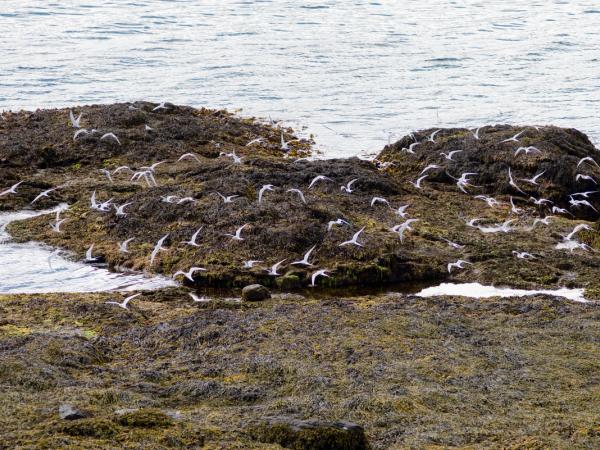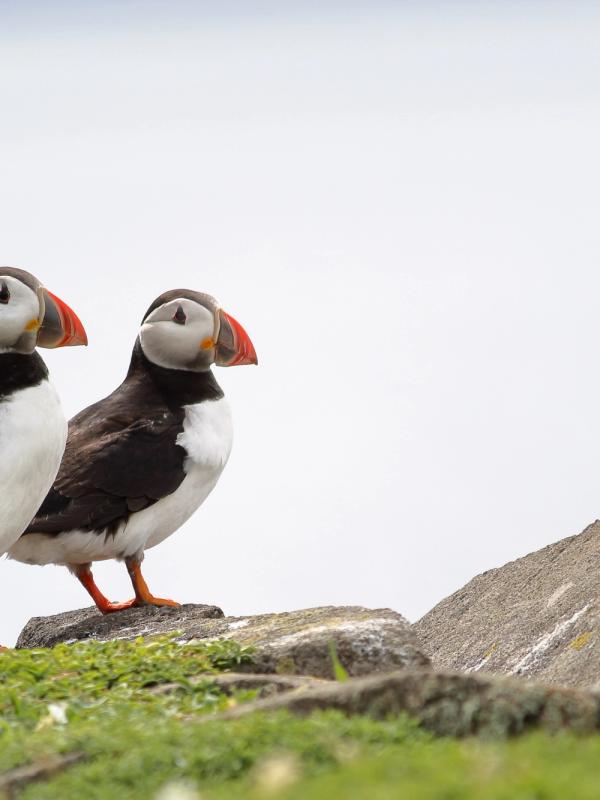
Lundey Island: Iceland's Puffin Haven Near Reykjavík
A short boat ride from Reykjavík sits a small, uninhabited island that's become one of Iceland's most popular wildlife attractions. Lundey Island (meaning "Puffin Island" in Icelandic) draws bird lovers and nature enthusiasts hoping to see the Atlantic puffins that make this place their home.
Key takeaways
- Lundey Island is in Faxaflói Bay, about 4.5 km from Reykjavík
- The best time to see puffins is from mid-May to mid-August
- The island hosts thousands of Atlantic puffins and other seabirds
- You can only visit through boat tours that leave from Reykjavík's Old Harbor
- Iceland is home to 60% of the world's Atlantic puffin population
- Boat tours usually last 1-2 hours and have a high success rate for puffin sightings
What's Lundey Island?
Lundey Island is a small, rocky spot measuring 400 meters long and 150 meters wide, with its highest point reaching 14 meters above sea level. Despite its small size, this island plays an important role in Iceland's ecosystem and tourism.
The island sits in Faxaflói Bay off the western coast of Reykjavík. While no humans live there, Lundey is filled with life during the summer months when thousands of seabirds make it their breeding ground. The main attractions are Atlantic puffins, whose unique look and behavior have earned them nicknames like "sea parrots" and "clowns of the sea."
Lundey is part of a small group of islands that includes nearby Akurey (also known for puffins) and Videy (known for its historical sites and Yoko Ono's Peace Tower). Together, these islands create a rich ecosystem in the waters near Iceland's capital.
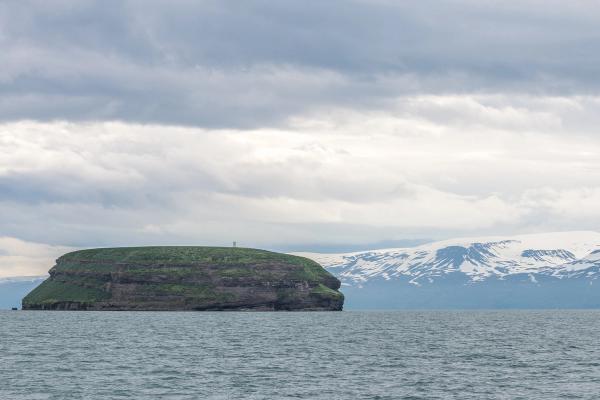
Formation & History
Like much of Iceland, Lundey Island formed through volcanic activity. The island was created by the same geological processes that made Iceland itself: the meeting of the North American and Eurasian tectonic plates along the Mid-Atlantic Ridge.
Over thousands of years, volcanic eruptions built up the land, while glacial activity during the last Ice Age helped shape its current form. The North Atlantic Ocean continues to shape the island's rocky coastline, creating perfect nesting spots for seabirds in its cliffs.
Historically, Icelanders may have visited the island for fishing, egg collecting, or bird hunting, though today it's protected as an important wildlife habitat.
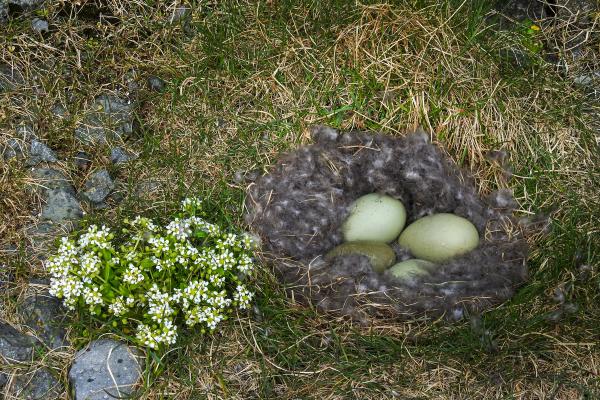
The Birds at Lundey
Lundey's main feature is its large colony of Atlantic puffins (Fratercula arctica). These birds, with their colorful beaks and penguin-like appearance, have become favorites among wildlife watchers worldwide.
Iceland is home to about 60% of the world's Atlantic puffin population, estimated at 8-10 million birds. During breeding season, thousands of puffins make Lundey their temporary home, digging burrows into the grassy slopes to lay their eggs or using existing rocky spaces.
Puffins aren't the only birds on Lundey. The island hosts many types of seabirds, including:
- Black guillemots
- Northern fulmars
- Arctic terns,
- Cormorants,
- Eider ducks,
- Various types of gulls and kittiwakes
An interesting part of Lundey's ecosystem is the relationship between puffins and arctic terns. Researchers have noticed that puffins time their breeding with the arctic terns; they start nesting when terns arrive and leave when terns depart. This timing may help protect both species, as terns are very good at defending their colonies against predators.
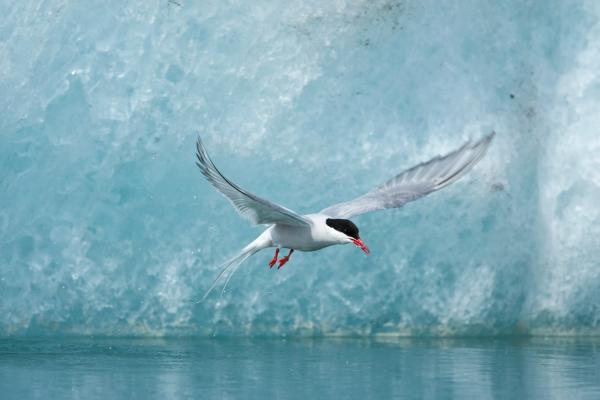
Location & How to Get There
Lundey Island is in Faxaflói Bay, about 4.5 kilometers off the western coast of Reykjavík.
Getting to Lundey requires joining a boat tour, as there are no public ferries to the island. Here's how to visit:
- Go to Reykjavík's Old Harbor (about a 15-minute walk from downtown)
- Book a tour with one of several companies offering puffin watching trips
- Take a short 15-20 minute boat ride to the island
- Circle the island by boat to see the birds from a safe distance
Visitors don't actually land on Lundey Island. To protect the ecosystem and nesting birds, all tours stay on boats, circling the island to provide views of the birds in their natural setting. This approach reduces disturbance while still offering good wildlife watching.
Most tour companies provide binoculars to help you see the puffins and other birds more clearly. If you like photography, bring a camera with a good zoom lens (200mm or longer) to capture these birds in action.
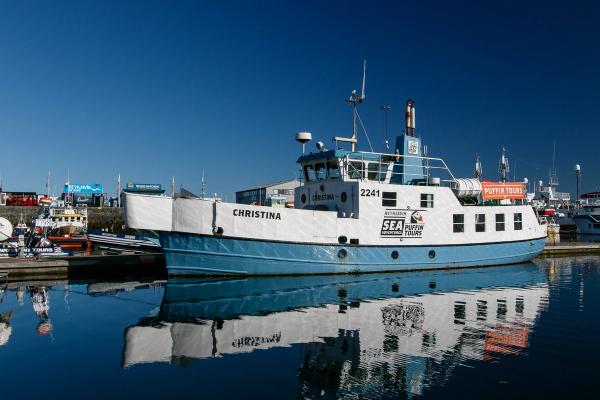
Best Time to Visit
The best time to visit Lundey Island is during the puffin breeding season, which runs from April to August. For the best puffin-watching, plan your visit between mid-May and mid-August when activity peaks.
During this period, tour operators typically offer a 100% puffin sighting guarantee. There are so many of them that they are truly hard to miss. Puffins are most active in the morning and evening when they're busy fishing and feeding their young.
Iceland's weather can change quickly, so check the forecast before booking. Tours may be canceled if the seas are rough or visibility is poor. Summer in Iceland brings long daylight hours, almost 24 hours of daylight around the summer solstice, thanks to the Midnight Sun, giving you plenty of chances to reschedule if needed.
Here's what to expect each month:
- April: Puffins begin returning to breeding colonies, but numbers are still low
- May: Puffin numbers increase a lot by mid-month
- June: Peak season with maximum puffin activity and the Midnight Sun
- July: Still excellent for puffin watching, with many baby puffins in nests
- August: Puffins begin leaving by mid-to-late August as their young grow up
- September-March: Few to no puffins present as they spend winter at sea
While summer is busiest for tourism, May and early September can offer a good mix of wildlife sightings with fewer crowds.
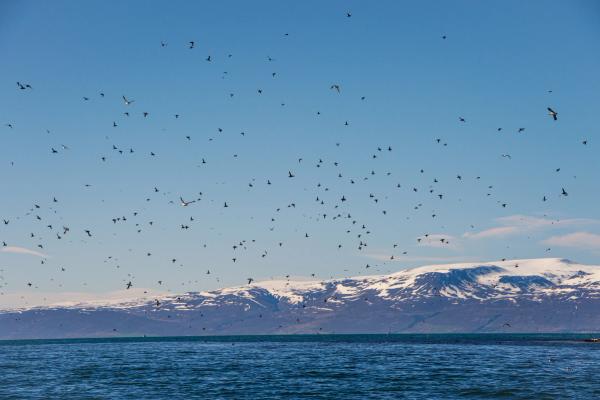
What to Wear
Like I said, Iceland's weather changes often, even in summer. When going on a puffin watching tour to Lundey Island, dress appropriately:
- Layer up: Even on sunny summer days, temperatures on the water can be cool (usually 10-15°C/50-59°F)
- Waterproof jacket: Protection from spray and sudden rain
- Hat and gloves: Useful on windier days
- Sturdy shoes: Boats can be slippery, so wear shoes with a good grip
- Sunglasses and sunscreen: The sun reflecting off water can be bright, even on cloudy days
- Scarf or buff: Helps protect your neck from the wind
Tour boats often have indoor areas where you can shelter if the weather turns bad, but you'll want to be outside for the best wildlife viewing. Having the proper clothing ensures you can enjoy the experience in any conditions.
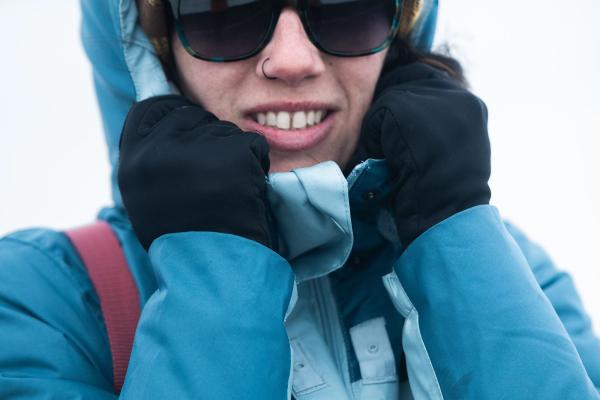
Things to do at Lundey Island
Lundey offers a wide range of activities, even though you can’t actually set foot on the island.
Puffin Watching Tours
The main activity at Lundey is puffin watching. These birds are fun to observe as they fly back and forth from the sea to their nests, often with beaks full of small fish. Their somewhat awkward takeoffs and landings make the activity even nicer, making even non-bird enthusiasts enjoy watching them.
Tours typically circle the island slowly, giving you many chances to spot puffins both in the water and on land. Guides know puffin behavior and will help point out the best places to look. The tours work well for families and all ages, usually lasting 1-2 hours total.
Most puffin tours from Reykjavík visit both Lundey and nearby Akurey Island, increasing your chances of good sightings. Prices typically range from $60 to $70 for adults, with lower prices for children.
Wildlife Photography
Lundey Island offers good opportunities for wildlife photographers. The colorful puffins against dramatic landscapes make for great images. Since you'll be shooting from a moving boat, here are some tips:
- Use a fast shutter speed (at least 1/1000 sec) to handle boat movement
- Set your camera to burst mode to capture birds in flight
- Bring the longest lens you have (200mm minimum, 300mm+ ideal)
- Consider a monopod for stability (tripods don't work well on boats)
- Position yourself on the upper deck if possible for better angles
Even with a smartphone, you can take memorable images, especially when puffins come close to the boat. Some tour boats have systems that reduce movement, making photography easier.
Birdwatching Beyond Puffins
While puffins are the main attraction, Lundey hosts many types of seabirds worth seeing. Serious birdwatchers should bring their own binoculars for the best experience, though many tours provide them.
The island's ecological importance is recognized by organizations like BirdLife International, which tracks seabird populations throughout Iceland. Guides often share information about conservation efforts and the challenges facing these bird populations.
Scenic Boat Tour
Even if you're not particularly interested in birds, the boat trip to Lundey offers excellent views of Reykjavík's coastline and the surrounding mountains. On clear days, you can see all the way to the Snæfellsnes Peninsula and its glacier-capped volcano, featured in Jules Verne's "Journey to the Center of the Earth."
Many tours combine puffin watching with a broader harbor tour, pointing out landmarks and sharing stories about Iceland's maritime history. It's a relaxing way to see the city from a different angle and appreciate the natural environment that exists so close to the capital.
Educational Eco-Tours
Some operators offer specialized eco-tours focused on education and conservation. These tours provide more detailed information about Iceland's marine ecosystem, the challenges facing seabird populations, and efforts to protect them.
The University of Iceland conducts research on puffin populations, and some tours include information about these scientific studies. These educational tours work particularly well for families with children or anyone interested in environmental conservation.
Conclusion
Lundey Island offers a good introduction to Iceland's rich birdlife and marine biodiversity. Just minutes from downtown Reykjavík, it provides an accessible wildlife experience that fits easily into even the busiest Iceland itinerary.
Whether you're a dedicated birdwatcher, a wildlife photographer, or simply someone who appreciates nature, a trip to Lundey shows the puffins against the dramatic backdrop of Icelandic landscapes. The island is a reminder of how wild nature and urban life exist together in Iceland, a country where the boundary between civilization and wilderness is often blurred.

